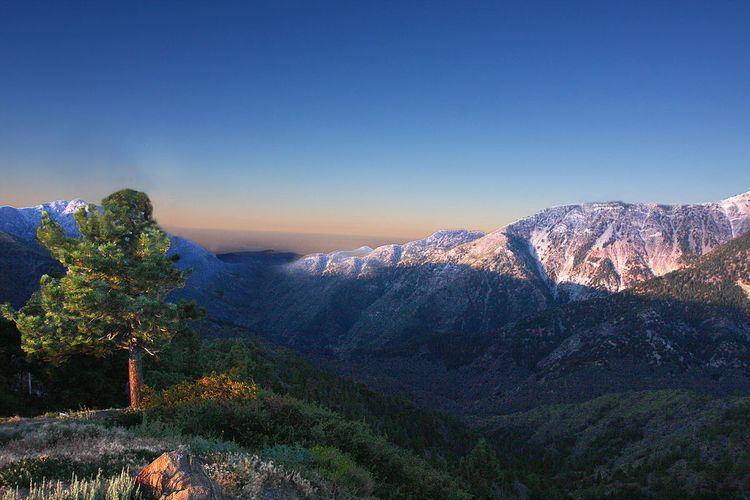Area 146.2 km² | Governing body U.S. Forest Service Established 1968 | |
 | ||
Similar Indio Hills Palms, Burleigh H Murray Ranch, Arthur B Ripley Desert W, Caspar Headlands State Bea, John Little State Natural R | ||
The San Gabriel Wilderness is a wilderness area created in 1968 of more than 36,118 acres (150 km2) within the Angeles National Forest and San Gabriel Mountains National Monument.
Contents
The area lies on the southern slopes of the San Gabriel Mountains, between the Angeles Crest and the West Fork of the San Gabriel River.
The area was originally set aside as the Devils Canyon-Bear Canyon Primitive Area of 35,000 acres (140 km2).
RecreationEdit
Permits are not required to enter the San Gabriel wilderness.
Access trailsEdit
The following trails provide access:
Hiking Trails within the Wilderness AreaEdit
Hiking trails in the Designated Wilderness are built and maintained utilizing hand tools and materials which are strictly limited in terms of environmental impact. The use of chainsaws to remove trees that are down across trails is prohibited, requiring the use of crosscut saws, block-and-tackle chains and ropes to pull trees off of trails, griphoists, and other mechanical tools which do not produce noise or petroleum-based pollutants.
In addition, wheeled tools and equipment are not permitted to be used in the Designated Wilderness, neither for trail maintenance nor for recreation, causing the wilderness to be classified for pedestrian and equestrian use only with mountain biking prohibited. Blasting to remove rock outcrops is prohibited, as is the use of fire-fighting tools like tractors, foscheck air drops, Tovex Firebreak II explosives, and chainsaws to cut fire lines. Everything must be done by hand, even when fighting fires within the Designated Wilderness.
The people who maintain hiking trails within the San Gabriel Designated Wilderness attempt to achieve a passable hiking experience within the wilderness that does not appear to be too greatly unnatural. To achieve such an effect, tree limbs and branches that must be cut back are finished with an effort to appear natural, bucked tree trunks that are removed from the trail are relocated so that they appear at a distance and do not look to have been cut by people, and even sawdust from crosscut saws will be collected and buried off of the trail.
